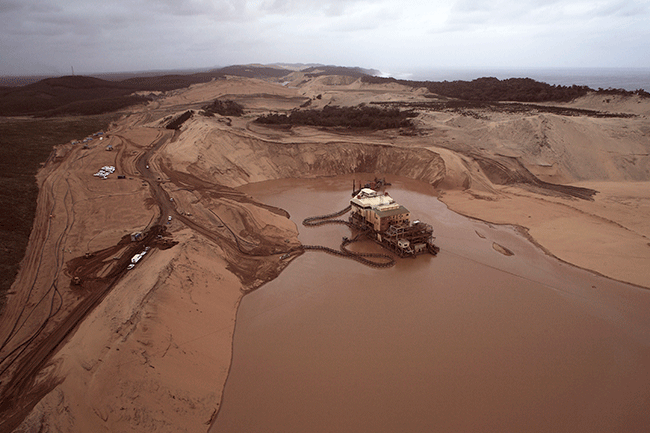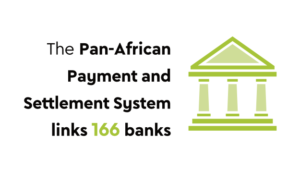There’s no evading the fact that mining is an environmentally disruptive activity. For every phone that we use or car that we drive, for every house that we live in – with its wiring, piping and rebar steel – ground somewhere was broken up, and kept open while ores were extracted and waste materials stockpiled.
In the past century, the location of some mines in remote parts of developing countries meant that there was little oversight of their environmental effects, leaving a legacy that continues to haunt those countries.
Thankfully, there is little tolerance for poor environmental practice today – from host communities, governments and mining companies themselves. Mining houses are more strictly required to minimise environmental damage during the course of their operations and formulate closure plans that will safeguard mining sites long after operations have ceased.
In Africa, some companies are coming up with increasingly efficient methods to ensure environmental sustainability.
Mining activity brings a potential environmental risk on several fronts. Most obvious is its physical reconfiguration of natural terrain – open pits are developed and shafts are sunk, while vegetation is removed to build access roads, processing facilities and settlements to house personnel. These are remediable after mining ceases, although mine planners have to take care that networks of shafts or piles of earth do not impinge on the hydrological system surrounding each operation. The mining area needs to be returned to a state in which it can be used for agriculture, settlement or conservation.
In addition to these physical effects, environmental risks also stem from the long- and short-term impacts of mining-related chemicals. Crushed ores are treated to extract the minerals they carry. This treated waste must be handled and stored safely during operations, and kept from creating environmental damage in the decades that follow mine closure.
Even when such chemicals are not used, mining companies need to anticipate what might happen when simple wastes are exposed to rain and air over long periods, potentially transforming low-risk materials into environmentally damaging substances through oxidation.
Mining houses are more strictly required to formulate closure plans that will safeguard mining sites long after operations have ceased
We focus here on how companies are mitigating these kind of risks – although mining houses also calculate their power and water use as part of their overall environmental footprint. As a counterpoint to the examples of good practice that follow, it’s worth first examining the legacy of poor past practice.
In South Africa, former gold-mining areas face increasingly serious problems with acid drainage from abandoned mines damaging both the natural environment and water supply infrastructure. Recent reports have suggested that the state may need to spend more than ZAR30 billion to remedy damage caused by mines left unrehabilitated, beyond the statutory rehabilitation contributions of mining firms.
It’s been estimated that more than 6 000 mines lie abandoned in the country – and with a steady fall in ore grades over time, the volume of waste rock needing rehabilitation has increased for more recent mines. Researchers at Yale University in the US have suggested that to produce a single standard bullion bar (12.5 kg), South African mines now create around 7 000 tons of mineral waste – the equivalent weight of 38 Boeing 747 aircraft.
Poor environmental practices have left a similarly troubling legacy elsewhere in Africa. In the DRC, for example, a past failure to contain cobalt mine tailings in the Katanga region has allowed toxic cobalt dusts to accumulate in some areas, to the extent that cobalt can be detected in locally produced vegetables and fish.
Similarly, in Zambia, toxic concentrations of metals and arsenic compounds can be detected in cassava crops in some Copperbelt villages. The Copperbelt has been a focus of intense rehabilitation activity, sponsored by the World Bank and aimed at reducing toxic metals in the soil after decades of poor environmental practices. These and other examples indicate the risks of poor practice, and the legacy left by inadequate measures in the past.
However, recent technological developments have improved the prospects for environmentally sustainable mining and successful rehabilitation, even in particularly difficult environments.
Two promising technologies focus on encouraging plants to grow in areas of mine waste. Metallo Tek, under development by Australia’s University of Queensland, offers the possibility of growing groundcover plants on soils contaminated with water-soluble toxic metals, allowing barren mine dumps to be re-vegetated and their contents contained.
In South Africa, researchers at Rhodes University’s Institute for Environmental Biotechnology – in collaboration with Anglo American – have developed a biological method that may allow for rapid rehabilitation of some coal waste dumps. Called ‘fungcoal’, the method combines fungi with weathered coal as a top-dressing for coal waste dumps, potentially allowing plants to take hold and progress the soil development of the area without the need for extensive top-soil replacement.
While new technologies hold out the prospect of better rehabilitation methods in future, mines currently enjoying success in environmental sustainability are those that get the best out of conventional methods with thorough planning, or which expand their environmental measures beyond their immediate operations.
In South Africa, Palabora Copper gives an example of a company with a well-developed ‘cradle to grave’ plan for environmental protection and subsequent rehabilitation. The JSE-listed mine has operated under various owners since the 1950s – pursuing a proactive environmental monitoring policy, and seeking to rehabilitate waste material dumps as they are created.
The company has the advantage of also producing vermiculite from its operations, which can be used as an effective top-dressing for its waste dumps, allowing plants to rapidly establish themselves and stabilise the soil.
The final test for a company such as Palabora will come at the end of the mine’s life, when more hazardous materials – for example the slag that remains from copper smelting – will need to be dealt with under the company’s detailed mine closure plan.
Also in South Africa, Harmony Gold has an extensive and innovative approach to rehabilitation across its managed properties. In tandem with standard rehabilitation practice, the company seeks to use create carbon sinks on its mining-affected properties by introducing plant species that sequestrate carbon.
Some of the same species can also be used as a source of bio-energy. Harmony has commissioned an anerobic digestion plant to use this plant stock, with first biogas production scheduled for this year.
To produce a single bullion bar, South African mines create around 7 000 tons of mineral waste – the equivalent of 38 Boeing 747s
Harmony is not the only company to pursue carbon sequestration as an adjunct to effective rehabilitation. On South Africa’s east coast, the Ongoye Carbon Sink project has been progressing under the ownership of BHP Billiton and its subsequent spin-off company, South32. Here the project seeks to improve degraded land through reforestation and carbon sequestration, with the intention of developing a ‘pro-poor’ mixed-use forest that sustains both conservation and local rural economies.
There are further examples of good environmental and rehabilitation practice elsewhere on the continent. In Zambia, First Quantum Minerals has been praised for its broader contribution to environmental sustainability in tandem with its ongoing copper-mining operations.
The Kansanshi Foundation Conservation Farming initiative, established by the company in 2010, has sought to involve rural communities in sustainable farming practices that are now taught far beyond the mine site. The techniques employed have led to a remarkable increase in crop yields for surrounding farmers while improving soil conservation and maintaining biodiversity.
Across Africa, the legislative environment is changing towards increased mandatory rehabilitation, and better environmental practice. Many companies have welcomed the certainty that clearer environmental regulation brings – the examples above show how some mines have innovated beyond the standard sustainability practices, and how new technologies may further improve mine rehabilitation in future.
Risks, however, remain. In a depressed economic climate for commodity producers and commodity-dependent states, environmental requirements are sometimes subordinated to economic concerns.
One of the principal points of risk – especially during an economic downturn – comes when near-exhausted mines are sold at low prices to lesser operators who may not have the skills or budget to ensure proper rehabilitation upon mine closure.
This need not be the case. In recent years, even junior companies can take advantage of an expanding network of mining consultants, or specialist NGOs that offer consultant advice when considering how best to undertake environmentally sound mine rehabilitation.
In some countries, companies that assume responsibility for rehabilitation have become an investment opportunity in themselves. South Africa’s Mine Restoration Investments has developed an innovative business model in which it seeks to develop and implement environmental rehabilitation and impact abatement technologies, with a view to generating returns from waste material.
A proliferation of this type of company – one that this able to profit from rehabilitation projects without placing its services beyond the price of smaller operators – could help to sustain environmental best practices across the continent.
















